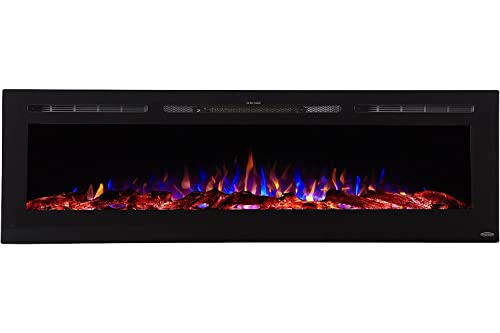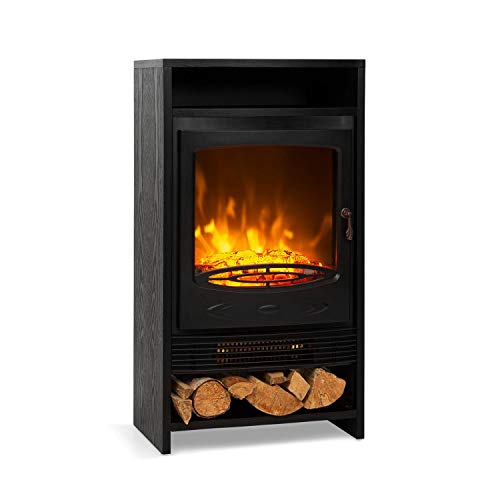
Fireplaces And Stove
Add a review FollowOverview
-
Posted Jobs 0
-
Viewed 54
Company Description
Where Will Wood Burner Fireplace Be 1 Year From Now?
How to Get the Most From a Wood Burner Fireplace
Contrary to traditional open fireplaces, wood stoves are designed and optimised to burn wood. This allows them to comply with stricter emission regulations.
 Wood burning stoves create sparkling yellow flames and soft crackling sounds. They also give you an incredibly warm feeling. However, the smoke it creates contains carbon monoxide and toxic air pollutants, such as benzene, formaldehyde and polycyclic aromatic hydrocarbons.
Wood burning stoves create sparkling yellow flames and soft crackling sounds. They also give you an incredibly warm feeling. However, the smoke it creates contains carbon monoxide and toxic air pollutants, such as benzene, formaldehyde and polycyclic aromatic hydrocarbons.
Efficient
Fireplaces and stoves that burn wood provide beautiful and natural heat to your home, and they are incredibly efficient. A good quality wood burner can be able to achieve an Ecodesign rating of up to 77%. With the rising cost of energy, it is essential to ensure that you’re getting the maximum benefit from your log burner The good news is that this is more simple than ever!
A key factor in the efficiency of the wood-burning stove is will be the water content of the wood. This is why we suggest only using seasoned wood that has been dried for a minimum of one year, and often two years. The more dry the wood, the better it burns. This results in less smoke, and less harmful emissions.
A wood burning stove offers the advantage of being an eco-friendly fuel source which is beneficial to the environment. Furthermore, by buying locally-sourced firewood, you’re aiding in the active management of forests which is a good option for wildlife.
The only thing a wood-burning stove requires in terms maintenance is to regularly remove and get rid of the ash. It can be a bit of a hassle however it is worth it to get the best heat from each log. If you allow the ashes to completely cool They can also be used as a non-toxic, eco-friendly melt of ice. They can be used to polish jewelry and also absorb smells.
A fireplace made of wood is a truly timeless classic. While they’re not as popular than gas fireplaces, the allure and charm of a roaring flame cannot be disregarded. They’re ideal for cozying in the cold winter nights and are a perfect method of creating an inviting and warm space within your home. Investing in a high-quality wood burner will pay for itself for many years. Contact us today to find out more about how our expert chimney sweeps can assist you in getting the most out of your stove.
Low Carbon
Wood burners that burn efficiently and cleanly are the most efficient option to save money while keeping your house warm. They also support local woodland management. This is a great method to support wildlife in your local area.
Wood-burning fireplaces and stoves create very little pollution if they are properly maintained and used with dry, seasoned and dry firewood. If they are not properly maintained or use wood that is of poor quality, the smoke that is produced contains fine particles, often referred to as particulate pollutants that can cause irritation to the lungs and other body organs. Carbon monoxide, toxic air pollutants like formaldehyde and benzene, and polycyclic aromatic hydrocarbons are also found in. Inhaling this type of air pollution could cause irritation of the lungs wheezing, coughing and asthma attacks and may even lead to serious health issues like cancer, heart disease or premature death.
Many are concerned that wood-burning stoves will contribute to climate changes however this isn’t true. Wood burning is a carbon neutral energy source. In the course of the life of a tree it absorbs carbon dioxide, and when it is burnt, the carbon absorbed is released back into the atmosphere.
The wood is sourced locally, which reduces the amount of pollution produced during the transport process. It is also essential to select top quality well-seasoned hardwoods, as they will provide an extended and more consistent burning time than softwoods.
Modern, EPA certified wood stoves and heaters (such as those made by Charlton & Jenrick) have much lower emissions than older stoves. They are certified to meet 2020 EPA standards that are significantly more strict than earlier emission limits.
To avoid the buildup of exhaust within your home, all wood-burning stoves must be vented completely to the outside. By keeping the flames away from the logs, and ensuring you use dry, seasoned wood, all our current clean burn and DEFRA exempt stoves are capable of producing very clear exhaust and have particulate levels that are 60 percent or less below the DEFRA limit.
A wood-burning stove that has an acatalytic converter or hybrid unit can offer the ultimate low-carbon option for heating. These units re-ignite gasses and particles released from the initial combustion in a second phase by mixing them with superheated air. The remaining gasses and particulates are transported through a catalytic combustion unit for a final third combustion. This reduces emissions to levels far below government standards.
Clean Burn
Cleanburn wood stoves burn fuel at the highest possible efficiency. This results in the release of minimal particles into the air when burning wood. The air management system of the stove controls the intake and ventilation of gases, ensuring that the combustion process takes place in a safe and controlled environment. It also regulates the height of the flame to minimize emissions and increase heat output.
This means that your chimney and the surrounding area will be a lot cleaner than older stoves. Particulate matter (also called particle pollution) caused by incomplete combustion of wood can cause respiratory problems like wheezing and coughing in people and contributes to the development of heart disease such as stroke, diabetes, and other serious health conditions. Wood burning can also contribute to poor air quality in cities.
Smoke from poorly combusted wood is a source of fine particulate pollutants as well as dangerous air pollutants like carbon monoxide, as well as other dangerous air pollutants such as nitrogen oxides, volatile organic compounds (VOCs) as well as benzene and formaldehyde. These particles can penetrate deep into the lungs and other organs which can cause discomfort, damage and even death. Airborne dust can also harm the surfaces of your home and create an unpleasant sludge-like feel to rooms.
It’s important to use only high-quality, seasoned and dried firewood when using your wood burner fireplace. Hardwoods such as oak beech, ash and are the best for heating. Hardwoods are dense and BTU content. They also offer more heat than softwoods.
Check with your local authority to determine whether they have rules concerning wood burning. These could include nuisance/odor regulations and visible emissions, or opacity limits for smoke.
If you have a wood burner with a glass door, it’s important to keep the glass free of grime and deposits. You can use a dry cloth or oven cleaner spray to do this. You can also add bicarbonate soda mixed with water to the glass.
Regular maintenance of your chimney and stove is also essential. Regular chimney cleanings are required to eliminate creosote, and also to ensure that the flue works properly. You should also mark the dates of your periodic inspections on your calendar. This will help you to avoid costly repairs and prolong the life of your wood burner.
Low Maintenance
Wood burning fireplaces are popular because they provide a natural warmth. This type of fireplace requires some maintenance and upkeep. The chimney, flue and stove are all possible sources of house fires if they are not maintained and cleaned regularly. These Fireplaces And Stove are also an excellent source of warmth when power is out, particularly in winter when snowstorms can cause branches to fall from trees and rip up power lines.
Utilizing a wood burner to heat your home will reduce your carbon footprint significantly when compared to other fossil fuel sources, such as gas. Modern wood stoves, inserts, and fireplaces are built to comply with EPA standards (Environmental Protection Agency), which means they produce very little emissions. The more seasoned wood you use the more efficient your stove will be. You’ll require less wood to achieve the same heat.
The fireplaces require some care and maintenance. They should be kept away from materials that ignite and have a screen installed. The flow of air will be improved by keeping the grate clean of ash and debris. This will help keep the fire burning longer and your home in good order. You should have your stove and chimney cleaned at least twice per year to prevent creosote build-up which could create an extremely dangerous fire hazard as well as a clog that can restrict ventilation.
It may take some time for homeowners who are new to the area to learn how to light, ignite and maintain a constant fire in the fireplace. Once you’ve achieved the art of creating and maintaining a fire in your wood burner, it can be a source of lasting enjoyment that provides warmth and warmth to your home all year long.
 Wood burning fireplaces are around in one form or another for more than 500 years. They’ve gained a lot of attention because of their energy efficiency, sustainability and the natural warmth that comes from wood. Talk to your local Regency dealer about the benefits of wood stoves or inserts for your home if you’re planning to purchase a new heater.
Wood burning fireplaces are around in one form or another for more than 500 years. They’ve gained a lot of attention because of their energy efficiency, sustainability and the natural warmth that comes from wood. Talk to your local Regency dealer about the benefits of wood stoves or inserts for your home if you’re planning to purchase a new heater.